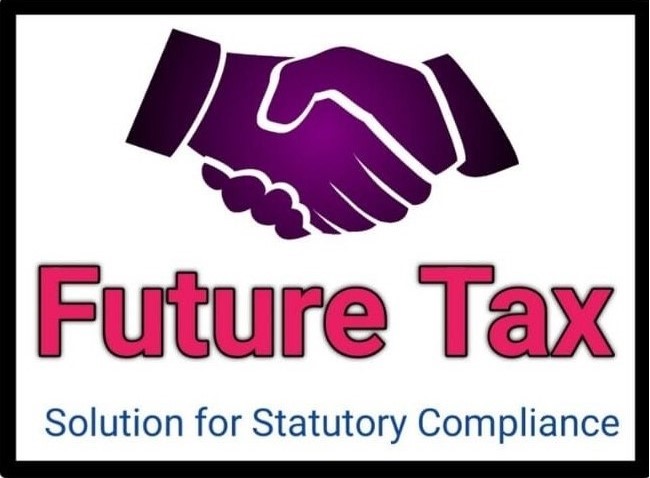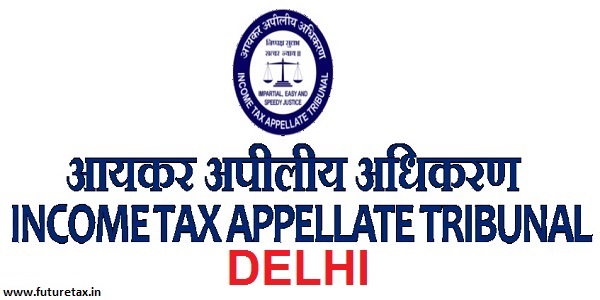
Best Top 2024 Tax Planning Tips Salary and Business
- Income Tax
- August 25, 2024
- No Comment
- 313
- 12 minutes read
Top 2024 Tax Planning Tips in India
Tax planning is more than just a financial chore; it’s a strategic step towards securing your financial future. As 2024 approaches, it’s essential to stay updated with the latest tax laws and optimize your savings. Whether you’re a salaried employee, a freelancer, or a business owner, effective tax planning can significantly reduce your tax liability and increase your savings. Let’s dive into some practical and actionable tax planning tips for the upcoming year.
Understanding the Indian Tax Structure
Before diving into specific tax-saving tips, it’s crucial to understand how the Indian tax structure works. For the financial year 2023-24, income tax slabs have been adjusted to reflect inflation and economic conditions. Knowing where you stand in these slabs can help you make informed decisions about deductions and exemptions.
Breakdown of Income Tax Slabs for FY 2023-24
For individuals below 60 years, the tax slabs under the old regime are as follows:
- Up to ₹2.5 lakh: Nil
- ₹2.5 lakh to ₹5 lakh: 5%
- ₹5 lakh to ₹10 lakh: 20%
- Above ₹10 lakh: 30%
The new tax regime, introduced a few years ago, offers lower tax rates with fewer deductions:
- Up to ₹2.5 lakh: Nil
- ₹2.5 lakh to ₹5 lakh: 5%
- ₹5 lakh to ₹7.5 lakh: 10%
- ₹7.5 lakh to ₹10 lakh: 15%
- ₹10 lakh to ₹12.5 lakh: 20%
- ₹12.5 lakh to ₹15 lakh: 25%
- Above ₹15 lakh: 30%
The key is to choose the regime that best aligns with your income and financial goals.
Maximizing Deductions under Section 80C
Section 80C remains one of the most popular sections for taxpayers in India. It allows for deductions of up to ₹1.5 lakh on investments in various instruments.
Investments Eligible under Section 80C
Some of the most common options include Public Provident Fund (PPF), Employee Provident Fund (EPF), National Savings Certificate (NSC), life insurance premiums, and Equity-Linked Savings Scheme (ELSS). Each of these has its own benefits and lock-in periods, so choose wisely based on your financial needs and risk tolerance.
How to Fully Utilize the ₹1.5 Lakh Deduction Limit
To make the most of the Section 80C limit, plan your investments at the start of the financial year rather than rushing in March. This approach ensures that your investments are aligned with your financial goals and risk appetite.
Exploring Section 80D for Health Insurance Premiums
Health is wealth, and in the tax world, it’s also a smart way to save. Section 80D allows you to claim deductions on the premiums paid for health insurance policies.
Benefits of Health Insurance Premium Deductions
You can claim up to ₹25,000 for premiums paid for yourself, your spouse, and dependent children. If you’re paying premiums for your parents, you can claim an additional deduction of up to ₹25,000 (₹50,000 if they are senior citizens).
Impact of Health Insurance Planning on Taxes
Apart from providing financial security in medical emergencies, health insurance premiums offer a double benefit by reducing your taxable income.
Investing in National Pension System (NPS)
The National Pension System (NPS) is another tax-saving avenue that not only reduces your tax liability but also helps in building a retirement corpus.
Additional Tax Benefit under Section 80CCD(1B)
NPS allows an additional deduction of up to ₹50,000 under Section 80CCD(1B), over and above the ₹1.5 lakh deduction under Section 80C. This makes it a valuable tool for those looking to maximize their tax savings.
Long-Term Advantages of NPS for Retirement Planning
NPS investments are market-linked, offering the potential for higher returns compared to traditional savings schemes. Moreover, a part of the maturity proceeds is tax-free, making it an attractive option for long-term financial planning.
Tax Benefits on Home Loans
Owning a home is a dream for many, and the tax benefits on home loans make it even more attainable.
Deductions on Principal Repayment under Section 80C
The principal repayment of a home loan is eligible for a deduction under Section 80C, contributing towards the ₹1.5 lakh limit.
Interest Payment Deductions under Section 24(b)
Additionally, you can claim a deduction of up to ₹2 lakh on the interest paid on your home loan under Section 24(b). This deduction is available even if the house is self-occupied, making it a significant tax-saving tool.
Making the Most of HRA (House Rent Allowance) Exemptions
If you live in a rented house and receive HRA from your employer, you can claim exemptions on it.
Eligibility Criteria for HRA Exemptions
The exemption is available to salaried individuals who live in a rented accommodation and receive HRA as part of their salary. The actual exemption is calculated based on the least of the following:
- Actual HRA received
- 50% of salary (in metro cities) or 40% (in non-metro cities)
- Rent paid minus 10% of salary
Calculating the Optimal HRA Exemption
To maximize your HRA exemption, ensure that your rent payments are well-documented. It’s also wise to align your salary structure to optimize the HRA component if possible.
Leveraging the New Tax Regime vs. Old Tax Regime
Since the introduction of the new tax regime, taxpayers have the option to choose between the old and new systems.
Comparison between the New and Old Tax Regimes
The old regime offers several deductions and exemptions, while the new regime provides lower tax rates with no deductions. The choice between the two depends on your income level and the deductions you can claim.
Choosing the Best Regime Based on Income and Investments
A general rule of thumb is that if your deductions and exemptions exceed ₹2.5 lakh, the old regime may be more beneficial. Otherwise, the new regime could result in lower taxes.
Tax Savings through Charitable Donations
If you’re inclined towards philanthropy, Section 80G offers tax deductions for donations to charitable organizations.
Deductions Available under Section 80G
Donations to specified funds and charitable institutions qualify for a deduction, ranging from 50% to 100% of the donated amount. However, not all donations are eligible, so it’s essential to check the organization’s status before donating.
Criteria for Claiming Charitable Donations
To claim this deduction, ensure that your donation is made to a recognized organization and that you retain the receipt. The deduction is available only for donations made in cash up to ₹2,000, while higher donations must be made via non-cash modes.
Tax Planning for Freelancers and Gig Workers
The gig economy is booming, and freelancers must navigate tax planning differently than salaried employees.
Understanding Presumptive Taxation under Section 44ADA
For professionals like doctors, lawyers, and consultants, Section 44ADA offers a simplified taxation process. Under this scheme, 50% of your gross receipts are considered as income, and the remaining 50% is deemed as expenses, simplifying your tax filing process.
Tips for Optimizing Tax Liabilities for Self-Employed Individuals
Keep track of all business-related expenses, invest in tax-saving instruments, and consider advance tax payments to avoid penalties.
Understanding Capital Gains Tax
Capital gains tax applies to profits earned from the sale of assets like property or shares.
Short-Term vs. Long-Term Capital Gains
Assets held for more than three years (two years for property) are considered long-term, while those held for shorter periods are short-term. Long-term gains are taxed at 20% after indexation, while short-term gains are taxed at your applicable income tax rate.
Strategies for Minimizing Capital Gains Tax
To reduce your capital gains tax, consider investing in capital gains bonds under Section 54EC or reinvesting the proceeds in another property under Section 54.
Utilizing Education Loan Interest Deductions
Education is an investment, and the tax system recognizes this through Section 80E.
Benefits under Section 80E
Interest paid on education loans is fully deductible from your taxable income, with no upper limit. This deduction is available for up to eight years from the year you start repaying the loan.
Tax Planning for Education Expenses
Ensure that the loan is taken from a recognized financial institution to qualify for the deduction, and plan your repayments to maximize tax benefits.
Tax Savings through Fixed Deposits and Other Savings Instruments
Fixed deposits are a safe investment, but not all FDs offer tax benefits.
Taxable vs. Tax-Saving Fixed Deposits
Tax-saving fixed deposits with a 5-year lock-in period qualify for deductions under Section 80C. However, the interest earned on these FDs is taxable.
Choosing the Right Savings Instruments for Tax Benefits
While FDs are safe, consider diversifying your investments into other tax-saving instruments like PPF or ELSS for potentially higher returns and better tax efficiency.
Planning for Tax-Free Income
Some income sources in India are completely tax-free, and understanding these can enhance your financial planning.
Income Sources Exempt from Tax
Income from agricultural activities, certain gifts, and dividends from equity shares up to ₹10 lakh are exempt from tax. Leveraging these exemptions can significantly reduce your taxable income.
How to Maximize Tax-Free Income Streams
Strategically plan your income sources to include tax-free avenues. For instance, investing in tax-free bonds or utilizing tax exemptions on agricultural income can be beneficial.
Conclusion
Tax planning is not a one-time activity; it requires regular updates and adjustments to stay in line with current laws and your financial situation. By understanding the available deductions, exemptions, and benefits, you can effectively reduce your tax liability and secure your financial future. Start early, stay informed, and consult with a tax advisor to tailor these tips to your specific needs.
FAQs
- What are the key tax changes for 2024 in India?
- The major changes include adjustments in tax slabs and the continued availability of the new tax regime as an alternative to the old one.
- Is it better to choose the old tax regime or the new one?
- It depends on your income level and the deductions you can claim. The old regime is beneficial if your deductions exceed ₹2.5 lakh.
- How can I maximize my Section 80C deductions?
- Invest in a combination of PPF, ELSS, and other eligible instruments early in the financial year to fully utilize the ₹1.5 lakh limit.
- Are there any tax benefits for senior citizens in 2024?
- Yes, senior citizens enjoy higher exemption limits and additional deductions under Sections 80D and 80TTB.
- What should freelancers focus on for tax planning?
- Freelancers should track all business expenses, consider the presumptive taxation scheme under Section 44ADA, and make timely advance tax payments.




